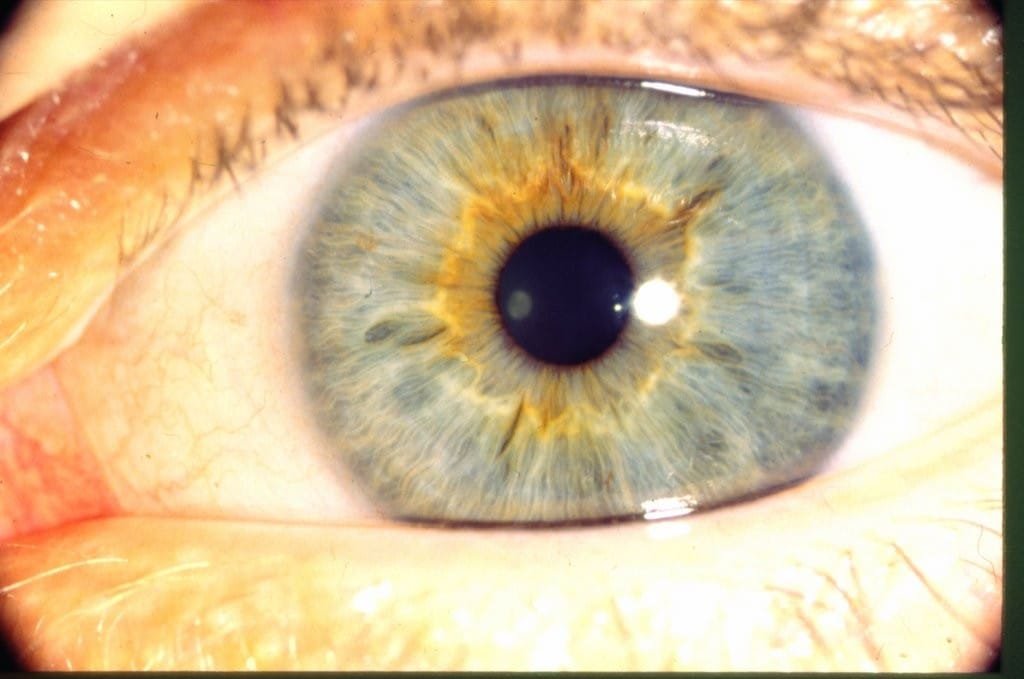
In turn, this is a sign that you’re more susceptible to heart attacks and strokes. The blue (or sometimes gray) ring around the iris often is associated with high cholesterol and triglycerides. When this white ring around the iris occurs in younger patients, however, it is generally attributed to high cholesterol levels. Thus the condition is identified with older patients. The “senilis” in the name is related to the word senile. These white rings around the iris are considered normal with age. When the deposits consist of calcium, the limbus appears milky and may indicate tissue damage that needs correction. This ring consists of calcium or lipid deposits on the circumference of the cornea, where the white section of your eye (the sclera) and the colored part (the iris) meet (called the limbus). Whenever circulation issues are suspected, your eye doctor has to investigate it.Īrcus senilis may sometimes appear as a white ring around the iris. In such a case, the possibility of poor ocular blood circulation could be a cause. While it’s generally common that the corneal arcus is present in both eyes, it is possible for the condition to appear in just one of your eyes. This halo can generally be viewed without equipment, but if it’s in early or moderate development, your ophthalmologist might require the magnification instruments common in most eye care offices. Besides the opaque halo on the eye surface, there aren’t any other symptoms. Schnyder central crystalline dystrophy also produces arcus.Īrcus senilis is not considered a health danger or an impediment to your vision. On the rare occasion when it affects only one part, it’s referred to as unilateral arcus and is often found with ocular hypotony or carotid artery disease. When you develop arcus senilis or corneal arcus, the lipids in your eyes tend to concentrate in two separate parts of the corneal stroma layer: the Bowman layer and near Descemet’s membrane. If you are having any abnormal visual symptoms, you should always be evaluated with a thorough consultation and examination by a ophthalmologist or optometrist in NYC for an accurate diagnosis and treatment plan as it may be a symptom or sign of a serious illness or condition. The yellowish ring also has a strong correlation with tobacco smokers and those with a history of high blood pressure. Men are more likely than women to develop the age-related arcus senilis, and this difference increases incrementally with age. Corneal arcus is more common in people of Asian and African origin as compared to Caucasians. The majority of people over the age of 70 or 80 develop gray or yellowish circular rings around the corneal periphery. This medical condition is often referred to as hypercholesterolemia. It’s usually associated with higher than normal lipid levels, generally consisting of esterified cholesterol in the blood - cholesterol that’s been chemically altered. When corneal arcus occurs in those less than 40 years old, the name used for the condition is arcus juvenilis. The incidence is even higher in the African American population, although researchers aren’t sure why. For persons over the age of 80, corneal arcus afflicts nearly 100 percent of those tested. The condition affects about 60 percent of the population between 50 and 60 years old.

However, these deposits can eventually expand to completely cover the entire circumference of your cornea, which is usually when you start having vision problems. The phospholipid sediments of the corneal arcus generally start at the bottom and the top of your cornea. The material is made of an abnormally high level of phospholipids and cholesterol deposits. This opaque halo surrounding your cornea’s stromal layer has a distinct border on the outside while the inside border is less defined. A flaxen or gray-colored band forms, circling the cornea of each affected eye. Arcus senilis is a circular ring in the periphery of your cornea made up of cholesterol deposits. Corneal Arcus (Arcus Senilis)Ĭorneal arcus generally appears in older people, which is why it’s also called arcus senilis. Saba Khodadadian and the best in class opthamologist in NYC Dr. If you have additional questions please come to Manhattan Pediatric Eye Doctors & Specialists, the best rated eye doctors in NYC. But since arcus senilis is considered both normal and benign for the elderly, no treatment is required or recommended. When you have Corneal Arcus (Arcus Senilis) eye disorders, your eye doctor may perform additional tests to rule out other conditions and find the cause of your eye discomfort.


DISCLAIMER: PLEASE READ CAREFULLY ON BOTTOM OF THE PAGE


 0 kommentar(er)
0 kommentar(er)
